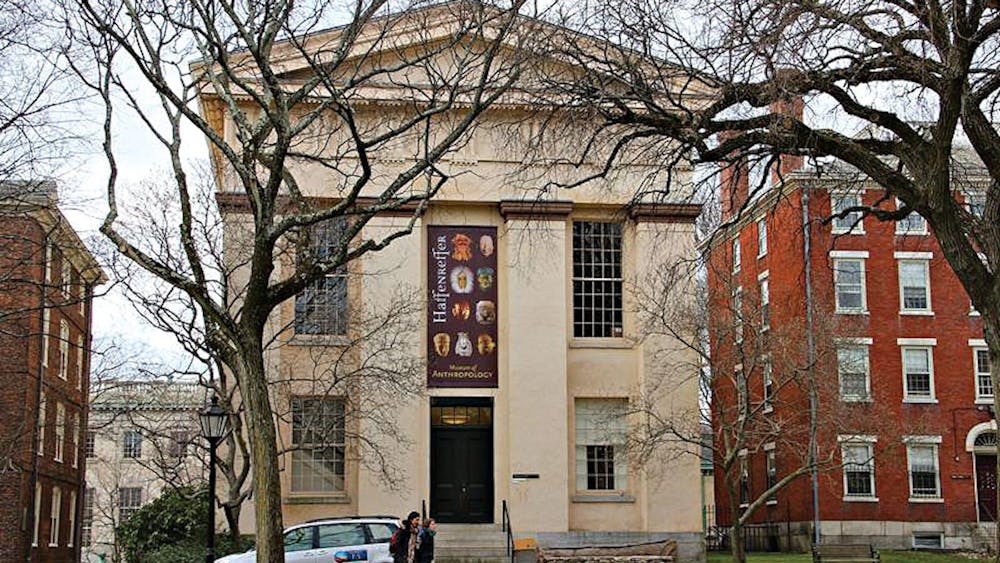A Jan. 12 revision to the Native American Graves Protection and Repatriation Act has prompted museums, including Brown’s Haffenreffer Museum of Anthropology, to implement changes and undergo repatriation procedures in recent years.
Originally signed into law by President George H. W. Bush in 1990, NAGPRA protects the rights of Indigenous and Native American tribes by regulating repatriation — the return of ancestral belongings and cultural objects to tribes. NAGPRA is currently administered by the National Park Service, and the U.S. Department of the Interior is responsible for issuing new regulations.
The Jan. 12 revisions aim to increase consultations and communications with Indigenous groups throughout the repatriation process and exhibition of new collections, according to a Dec. 6 press release by the Department of the Interior.
The changes increase the role of tribes and Native Hawaiian Organizations in the repatriation process. They also require museums to obtain consent before displaying remains of ancestors or cultural belongings. The new policies include a five-year timeline for museums to “consult and update inventories” of remains and belongings covered by NAGPRA.
Angelo Baca, an assistant professor in the history, philosophy and social sciences department at the Rhode Island School of Design, wrote in an email to The Herald that the changes to NAGPRA are “overdue.”
Baca, a Navajo and Hopi researcher with experience in international repatriations and NAGPRA limitations, emphasized the importance of respect in the repatriation of “ancestors and culturally significant items.”
“Universities and colleges should be doing more to facilitate and lead the effort,” Baca added. He urged universities to go “above and beyond … to (respect) cultural protocols.”
Haffenreffer Director Robert Preucel said the museum’s repatriation efforts preceded the Jan. 12 update. “We anticipated many of these changes and reached out to the University administration for support,” he wrote in an email to The Herald.
Preucel mentioned that the University recently hired Bernstein and Associates, a consulting firm that specializes in repatriation and NAGPRA compliance.
Preucel emphasized the progress made by the Haffenreffer Museum over the last year, noting several efforts, including consulting with 21 tribal nations and posting Notices of Inventory Completion — confirmation that a museum has consulted with a tribe to determine the cultural origin of inventory items — to the Federal Register.
Thierry Gentis, Haffenreffer’s head curator and NAGPRA coordinator, noted that consultation “is a very important part of NAGPRA work and leads to repatriations that hopefully help redress some past injustices,” he wrote in an email to The Herald.
He added that the museum “has long adapted a practice” of discussing exhibitions with native consultants “for the proper handling and care of the ancestors in the museum.”
In 2023, officials in the Narragansett Indian Tribe said the Haffenreffer did not adequately consult with the tribe, The Herald previously reported.
According to Preucel, the Haffenreffer has recently taken measures to address the “problematic circumstances” under which it obtained parts of its collection.
He added that the new regulations will help the museum build partnerships with tribes, noting that the museum will collaborate with tribes to develop “new exhibition policies and guidelines for collections care.” The new regulations require museums to obtain consent from descendants or tribes before displaying or conducting research into ancestors’ remains or belongings, according to the Department of the Interior press release.
Indigenous cultural belongings have been removed from other museums across the country following the new regulations. Earlier this month, the Peabody Museum of Archaeology and Ethnology at Harvard closed exhibits displaying Native American artifacts to comply with the regulations, according to the Harvard Crimson.
“NAGPRA is human rights legislation,” Preucel wrote. “It is an opportunity for museums to redress their negative histories and work with tribes to help represent their contemporary needs and concerns to diverse audiences.”
Correction: A previous version of this article incorrectly named the industry of Bernstein and Associates, which is a NAGPRA consulting firm. The Herald regrets this error.

Sophia Wotman is a University news editor covering activism and affinity & identity. She is a senior from Long Island, New York concentrating in political science with a focus on women’s rights. She is a jazz trumpet player, and often performs on campus and around Providence.





